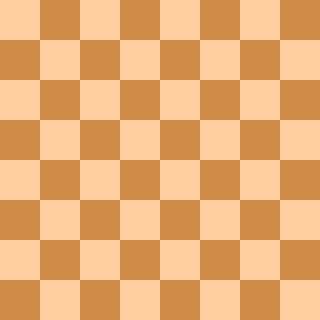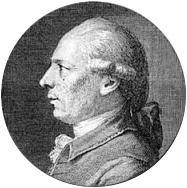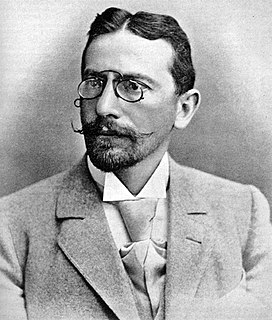 W
WEG is a magazine which publishes endgame studies and discusses various aspects of the endgame in chess. The letters "EG" signify "End Game" and also the Latin phrase exempli gratia. While many chess magazines include sections for endgame studies, EG is unique for its exclusive focus.
 W
WAn endgame tablebase is a computerized database that contains precalculated exhaustive analysis of chess endgame positions. It is typically used by a computer chess engine during play, or by a human or computer that is retrospectively analysing a game that has already been played.
 W
WThe wrong bishop is a situation in chess endgame when a bishop on the other color of square of the chessboard would either win a game instead of draw or salvage a draw from an inferior position ; in other words, a bishop is unable to guard squares of the other color. This most commonly occurs with a bishop and one of its rook pawns, but it also occurs with a rook versus a bishop, a rook and one rook pawn versus a bishop, and possibly with a rook and one bishop pawn versus a bishop.
 W
WBasic Chess Endings is a book on chess endgames which was written by Grandmaster Reuben Fine and originally published on October 27, 1941. It is considered the first systematic book in English on the endgame phase of the game of chess. It is the best-known endgame book in English and is a classic piece of chess endgame literature. The book is dedicated to World Champion Emanuel Lasker, who died in 1941. It was revised in 2003 by Pal Benko.
 W
WThe bishop and knight checkmate in chess is the checkmate of a lone king which can be forced by a bishop, knight, and king. With the stronger side to move and with perfect play, checkmate can be forced in at most thirty-three moves from any starting position where the defender cannot quickly win one of the pieces. The exception is the "stalemate trap". These exceptions constitute about 0.5% of the positions. Checkmates are possible with the defending king on any square at the edge of the board, but can be forced only from positions with different material or if the defending king is in a corner controlled by the bishop or on a square on the edge next to a corner, but mate adjacent to the corners not controlled by the bishop is only two moves deep, so is not generally encountered unless the defending side plays inaccurately. Although this is classified as one of the four basic or elementary checkmates, it occurs in practice approximately only once in every 6,000 games.
 W
WCheckmate is a game position in chess and other chess-like games in which a player's king is in check and there is no way to avoid the threat. Checkmating the opponent wins the game.
 W
WA chess problem, also called a chess composition, is a puzzle set by the composer using chess pieces on a chess board, which presents the solver with a particular task. For instance, a position may be given with the instruction that White is to move first, and checkmate Black in two moves against any possible defence. A chess problem fundamentally differs from over-the-board play in that the latter involves a struggle between black and white, whereas the former involves a competition between the composer and the solver. Most positions which occur in a chess problem are 'unrealistic' in the sense that they are very unlikely to occur in over-the-board play. There is a good deal of specialized jargon used in connection with chess problems; see glossary of chess problems for a list.
 W
WThe GBR code is a system of representing the position of chess pieces on a chessboard. Publications such as EG use it to classify endgame types and to index endgame studies.
 W
WThe Lucena position is one of the most famous and important positions in chess endgame theory, where one side has a rook and a pawn and the defender has a rook. It is fundamental in the rook and pawn versus rook endgame. If the side with the pawn can reach this type of position, they can forcibly win the game. Most rook and pawn versus rook endgames reach either the Lucena position or the Philidor position if played accurately. The side with the pawn will try to reach the Lucena position to win; the other side will try to reach the Philidor position to draw.
 W
WThe Philidor position usually refers to an important chess endgame which illustrates a drawing technique when the defender has a king and rook versus a king, rook, and a pawn, though it can also refer to a position in the queen versus rook endgame or a position in a rook and bishop versus rook endgame. In the case of a rook and pawn versus a rook, it is also known as the third rank defense, because of the importance of the rook on the third rank cutting off the opposing king. It was analyzed by François-André Danican Philidor in 1777. Many rook and pawn versus rook endgames reach either the Philidor position or the Lucena position. If played accurately the defending side tries to reach the Philidor position; the other side tries to reach the winning Lucena position. Some consider this to be one of the most important positions in endgame theory".
 W
WThe queen and pawn versus queen endgame is a chess endgame in which both sides have a queen and one side has a pawn, which they are trying to promote. It is very complicated and difficult to play. Cross-checks are often used as a device to win the game by forcing the exchange of queens. It is almost always a draw if the defending king is in front of the pawn.
 W
WThe Réti endgame study is a chess endgame study by Richard Réti. It was published in 1921 in Kagans Neueste Schachnachrichten. It demonstrates how a king can make multiple threats and how it can take more than one path to a given location, using the same number of moves. It is covered in many books on the endgame. The procedure is known as the "Réti Maneuver" or "Réti's Idea", ,. Endgame composer Abram Gurvich called the theme "The Hunt of Two Hares" and it appears in many other studies and games. It is also called "chasing two birds at once".
 W
WThe rook and pawn versus rook endgame is of fundamental importance to chess endgames, ,, , and has been widely studied, . Precise play is usually required in these positions. With optimal play, some complicated wins require sixty moves to either checkmate, win the defending rook, or successfully promote the pawn. In some cases, thirty-five moves are required to advance the pawn once.
 W
WThe Saavedra position is one of the best known chess endgame studies. It is named after the Spanish priest Rev. Fernando Saavedra (1849–1922), who, while living in Glasgow in the late 19th century, spotted a win in a position previously thought to have been a draw.
 W
WThe Tarrasch rule is a general principle that applies in the majority of chess middlegames and endgames. Siegbert Tarrasch (1862–1934) stated the "rule" that rooks should be placed behind passed pawns – either yours or your opponent's. The idea behind the guideline is that (1) if a player's rook is behind his passed pawn, the rook protects it as it advances, and (2) if it is behind an opponent's passed pawn, the pawn cannot advance unless it is protected along its way.
 W
WThe two knights endgame is a chess endgame with a king and two knights versus a king. In contrast to a king and two bishops, or a bishop and a knight, a king and two knights cannot force checkmate against a lone king. Although there are checkmate positions, the superior side cannot force them against proper, relatively easy defense.